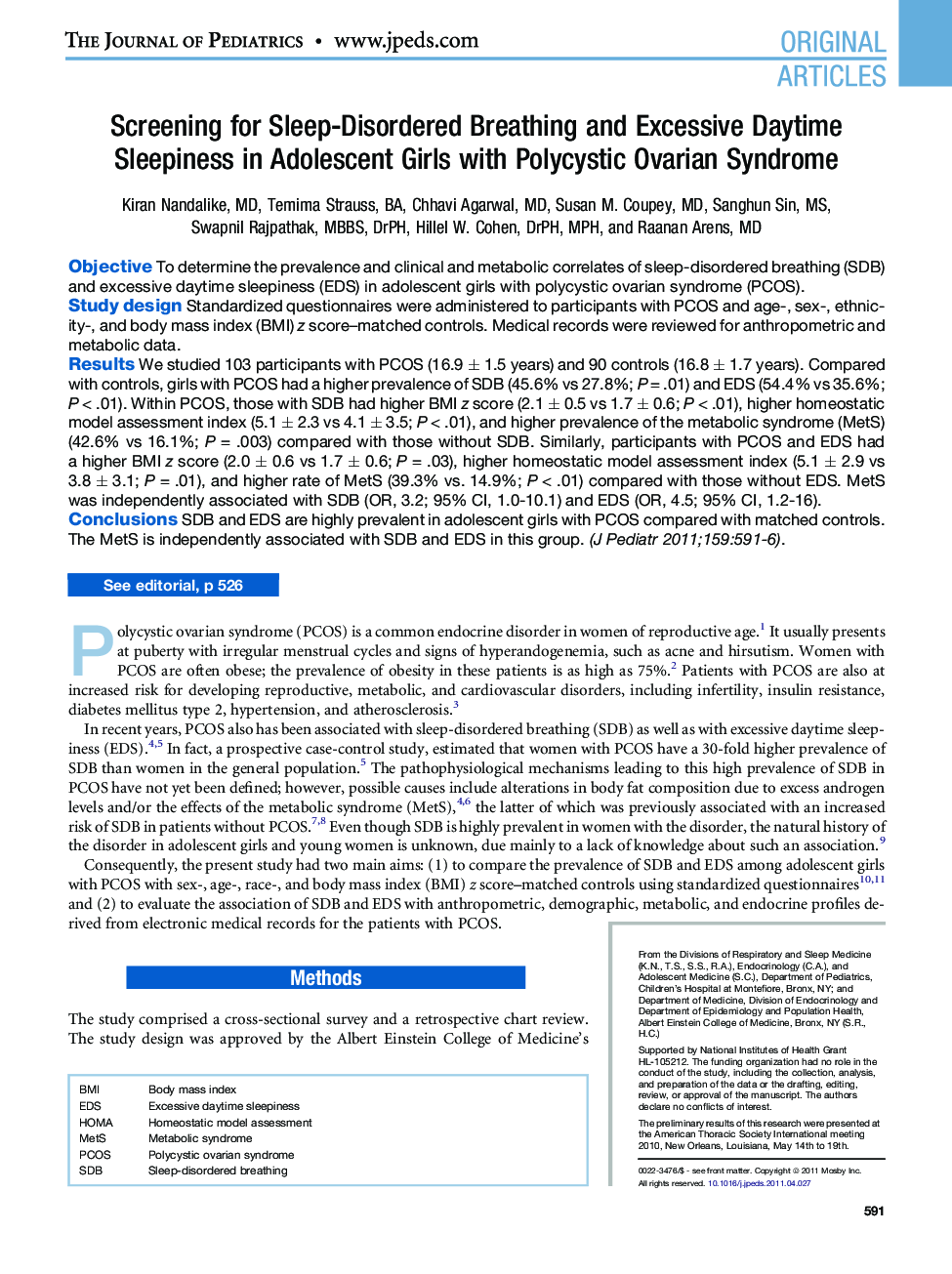| Article ID | Journal | Published Year | Pages | File Type |
|---|---|---|---|---|
| 4165818 | The Journal of Pediatrics | 2011 | 6 Pages |
ObjectiveTo determine the prevalence and clinical and metabolic correlates of sleep-disordered breathing (SDB) and excessive daytime sleepiness (EDS) in adolescent girls with polycystic ovarian syndrome (PCOS).Study designStandardized questionnaires were administered to participants with PCOS and age-, sex-, ethnicity-, and body mass index (BMI) z score–matched controls. Medical records were reviewed for anthropometric and metabolic data.ResultsWe studied 103 participants with PCOS (16.9 ± 1.5 years) and 90 controls (16.8 ± 1.7 years). Compared with controls, girls with PCOS had a higher prevalence of SDB (45.6% vs 27.8%; P = .01) and EDS (54.4% vs 35.6%; P < .01). Within PCOS, those with SDB had higher BMI z score (2.1 ± 0.5 vs 1.7 ± 0.6; P < .01), higher homeostatic model assessment index (5.1 ± 2.3 vs 4.1 ± 3.5; P < .01), and higher prevalence of the metabolic syndrome (MetS) (42.6% vs 16.1%; P = .003) compared with those without SDB. Similarly, participants with PCOS and EDS had a higher BMI z score (2.0 ± 0.6 vs 1.7 ± 0.6; P = .03), higher homeostatic model assessment index (5.1 ± 2.9 vs 3.8 ± 3.1; P = .01), and higher rate of MetS (39.3% vs. 14.9%; P < .01) compared with those without EDS. MetS was independently associated with SDB (OR, 3.2; 95% CI, 1.0-10.1) and EDS (OR, 4.5; 95% CI, 1.2-16).ConclusionsSDB and EDS are highly prevalent in adolescent girls with PCOS compared with matched controls. The MetS is independently associated with SDB and EDS in this group.
